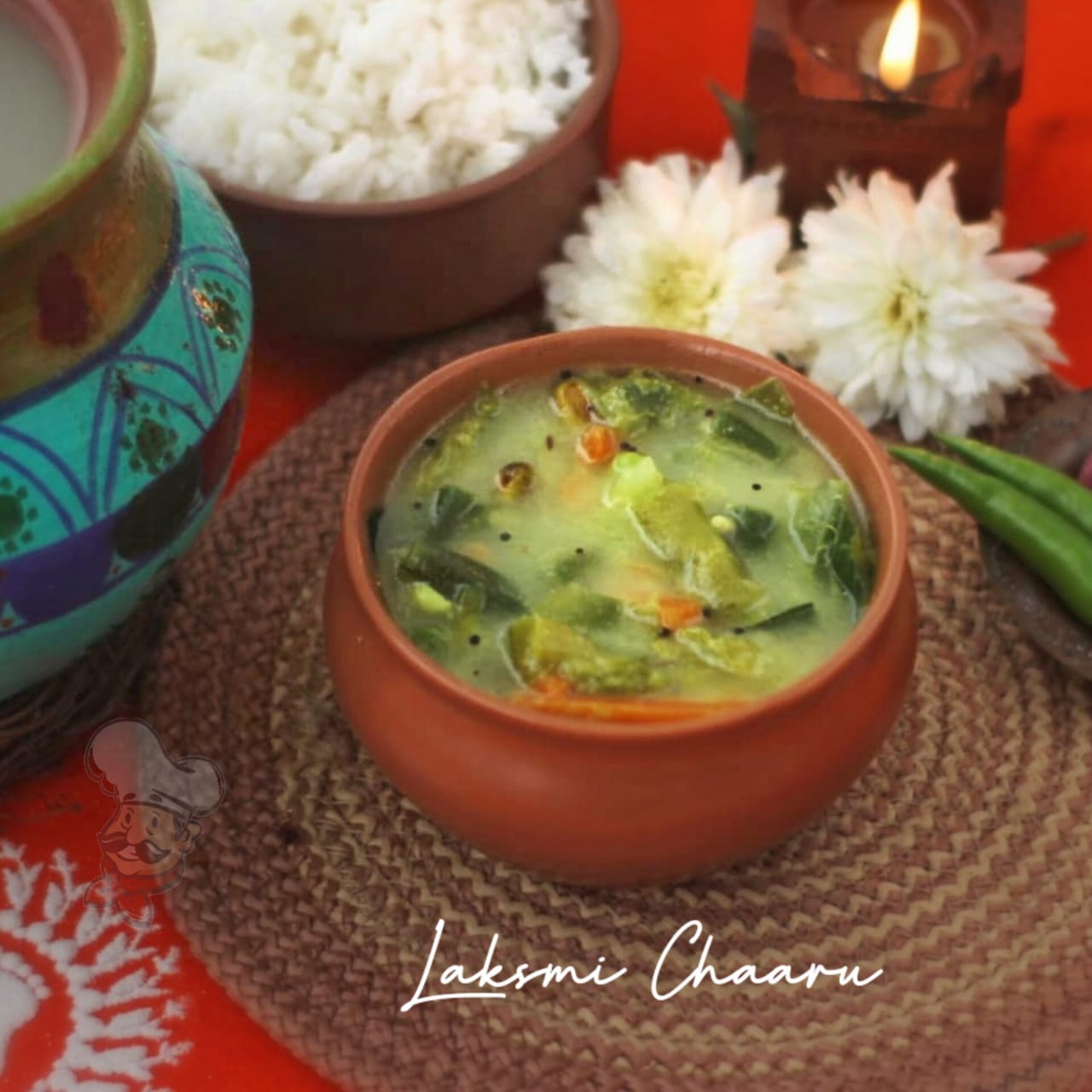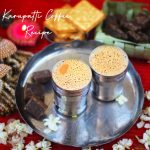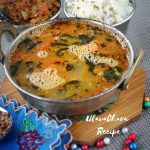Enjoy the galvanic experience of tasting the Lakshmi Chaaru, a noteworthy dish from Godavari district, that is enriched with its nutrients and as well as its history... You can fest on this summer special dish and can surprise your guests with this less known delicious delicacy and can boast off about your "kali kunda " (mud Pot) and your grandma's history behind it...
Table Of Contents:
1. Lakshmi Chaaru
2. An Insight Into Lakshmi Chaaru
3. A Word On Our Indian Ancestory
4. Their Intrinsic Knowledge Of Food
5. A Glimpse Into The Practice Of Making Lakshmi Chaaru
6. The Making Of Lakshmi Chaaru
7. Pots And Practice
8. The Benefits Of Lakshmi Chaaru
9. Ingredients Required To Make Lakshmi Chaaru
10. Directions To Make Authentic Telungana Lakshmi Chaaru
11. Some Ideas That Might Help
12. Faqs
13. Perfect Accompaniments
14. Some Serving Ideas That May be Useful
15. Nutritional Value
16. Specifications On Lakshmi Chaaru
Here comes an absolutely unique recipe from the exemplary Telungana Cuisine, Lakshmi Chaaru, in which the word Lakshmi, refers to the Goddess of Wealth, and Chaaru means " essence" which gives us the meaning "essence of God". It is a nutritious broth like soupy mixture made of assorted veggies boiled in fermented rice water that would entice you with its deliciousness and invigorating properties.
An Insight Into Lakshmi Chaaru:
It is really stunning to see a dish being named after God and the whole thing is being considered "auspicious and divine". Does it seem to arouse your curiosity like me? Well, let us dive deep in for a while to see what it is.
A Word On Our Indian Ancestry:
Godavari district and some parts of Telungana are quite famous for this authentic Lakshmi Chaaru though it is popular all over the state of Andhra Pradesh. A much adored recipe from our ancestors' culinary treasure trove, this dish Lakshmi Chaaru is indeed a boon recipe invented by our thoughtful predecessors who always insisted on the well being of themselves and as well as their future generations. Their knowledge of science, medicine, food and wellness simply surprise us because mostly they led a simple way of living in a confined geographical area and they earned a nominal income and lived a humble life within their means. But their practical knowledge and foresight are flawless and awe-inspiring that could inspire us till date which have withstood the test of time.
Their Intrinsic Knowledge Of Food:
Our ancestors had a deep idea of what they grow and how and when they reap, cook and eat their crops and other stuff and were clear about their implications on our body. They must have learnt everything by trial and error method and possessed abundant practical knowledge and they were also keen on passing on everything to the next generation right from the way of living to culture and religion which of course included food, medicine and home remedies too.
Food and work were eyes for them, and there are innumerable dishes and recipes ranging from starters to desserts and beverages that varied from region to region and while talking about Andhra Cuisine we stumble upon this laudable recipe of Lakshmi Chaaru. It got its name owing to its potential health benefits and its amazing healing and therapeutic properties. As it gives good health it is considered as Goddess Lakshmi, as being hale and healthy is the greatest wealth one can acquire in this world.
A Glimpse Into The Practice of Making Lakshmi Chaaru:
With rice being the staple food of the South Indians, rice starch water is one of the indispensable ingredient in every household. This dish Lakshmi Chaaru is made of boiled veggies and fermented rice water. Rice is soaked and its water is collected consecutively say for a week or so and allowed to ferment and subsequently the starch from cooked rice is also added to it. Everyday when fresh rice water is added, the sediments that has layered on top is poured out gently to keep it fresh and this process is continued for three to five days. This is kept untouched in the Eshanya Moolai i, e, the north east corner of the kitchen which is considered auspicious according to Vastu Shashtra.
The Making Of Lakshmi Chaaru:
Lakshmi chaaru consists of two parts and they are the fermented rice water and the vegetable essence.Generally vegetables like sweet potato, tomato, onion, lady's finger, green chili,drumstick, brinjal and bottle gourd are used to make Lakshmi chaaru. Amaranth leaves is one of the special indispensable addition here and it is quite popular in the districts of Telungana. Just boiling all the veggies including amaranth in fermented rice water with salt and turmeric is the traditional way of making the Lakshmi Chaaru and it does not even include the tempering (thalimpu) and the addition of spices.
Pots And Practice:
Exclusive clay pots called taravni pots are used to preserve this and this liquid is used as the base to make soups, chaaru or rasam varieties. Godavari district and some corners of Telungana take the pride of popularizing this dish, though nowadays you get this dish even at restaurants right from simple hotels to iconic establishments in the districts of Andhra Pradesh. It is also called as Kali chaaru or Taramanu Rasam and unexpected guests are always welcomed with this nutritious Lakshmi Chaaru and a much adored feast during summers.
The Benefits Of Lakshmi Chaaru:
This Lakshmi Chaaru is the best probiotic with natural vitamins and minerals and it has multiple health benefits. It is rich in protein and B vitamin and a best way to cool your body during summer. It is power packed with nutrients and a healthy diet to kick start your day with. Drinking Lakshmi Chaaru as such without boiling serves as the best remedy for urinary tract infections. It cures mouth and stomach ulcers owing to its high B complex vitamin. It has been believed since ancient times that this miracle liquid Lakshmi Chaaru protects the body from Sun's heat during summers and prevents sun stroke.
Look into the recipe of this miracle recipe from Telungana Cuisine:

Ingredients needed to make Lakshmi Chaaru:
Vegetables : Regular veggies like beans, carrot, drumstick, bottle gourd, pumpkin, brinjal and some amaranth leaves are added here as they taste delicious for Lakshmi Chaaru.
Spices : Dried red chili or one green chili will do for the spice as we are going to have it as a thick soup as such.
Tempering: Traditional spices like mustard and cumin seeds with some fresh curry leaves works wonders here.
Garnish : Coriander leaves give a fantastic finish to Lakshmi Chaaru.
Directions To Make Lakshmi Chaaru:
1. Make The Mud Pot Ready: Place a new mud pot in the Eshanya Moola and decorate it with turmeric and kumkum and tie a flower string or turmeric string around it as it is considered auspicious.
2. Collect t he rice water consecutively: Collect the rice water, starch, vegetable water consecutively for four to five days in the mud pot.
3. Boil The Veggies : Take a large mud pot and boil all the above mentioned veggies with the rice water.
4. Temper The Lakshmi Chaaru: Temper the chaaaru with regular spices like mustard seeds, cumin seeds, dried red chili and curry leaves.
Take a medium sized mud pot with a lid and after washing it well decorate it with turmeric and kumkum spots and tie a string of pasupu ( wild turmeric long) around the pot and keep it over a stand and place in the north east corner of the kitchen.
Soak a cup of rice in two or three cups of water and let it remain for about twenty to tirthy minutes approximately. After a while, rinse of the first water to get rid of any impurities and collect the second rinse in the pot. Similary, do it the next day and repeat the same process continuously for seven days. By this time, the rice water could have got fermented and reached the desired stage for making the Lakshmi Chaaru. Now, we are ready with the base water to make Lakshmi Chaaru.
Take a large earthern pot and fill it up with four cups of rice water. Heat it in medium flame and plop in the washed vegetables (as mentioned in the lingredients list) one by one and scatter the required salt to it. Add in a bunch of thotakura, and finally tip in one or two pinches of turmeric powder. When the vegetables are boiled completely and reaches a reasonably thick consistency scatter some coriander leaves and take it out from the stove.
Heat a tiny pan and tip in one or two spoons of ghee and when it is heated add a teaspoon of mustard seeds, cumin seeds and three dried red chilies. When it pops up, add a sprig of curry leaves and wait for a second to splutter. Now splash in this hot tempered ingredients to the earthern pot and stir in. The delicious Lakshmi Chaaru is ready.
Some Ideas That Might Help:
1. You can add any number of vegetables and of any kind like bottle gourd, yam or yellow pumpkin that suits the dish.
2. you can add a little bit of jaggery finally to spruce it up and it is optional.
3. You should strain the Lakshmi chaaru using a tea filter before adding it to the cooking clay pot.
4. You can use any thick bottomed vessel apart from using a clay pot.
5. You have to collect rice water and wait for for a minimum of five days for it to get fermented.
6. You can use a portion of fermented water to wash rice every day and pour it inside again besides adding the fresh rice water.
7. Adding of dry prawn heads with amaranth leaves is the popular non vegetarian version of this Lakshmi Chaaru and it tastes fantabulous.
8. In some areas, they include red chili powder and tamarind for additional taste and it is optional. And here I have given the traditional way of making Lakshmi Chaaru.
Faqs:
1. What else can we add to the Lakshmi chaaru pot other than fermented rice water and rice starch water?
You can add the dal water (both washed and cooked) and any water that remains while boiling pulses,cereals and grains.
2. How long can we keep it for one go?
You can retain it for about five or six days and can make Lakshmi Chaaru or even in three or four days if the sufficient chaaru is collected.
Suitable Accompaniments:
- Steamed rice with ghee
- Mudda Pappu
- appadalu
- avakaya
Some Presentation Ideas:
Using traditional utensil like clay cups and bowls gives an authentic feel and it is advisable to make this Lakshmi Chaaru in a mud pot. Serve it directly from the pot as it retains heat and the earthy flavor of the chaaru. You can top it up with a handful of moong sprouts or multigrain sprouts to spruce it up. Sprinkle some raw onions and squeeze out a dash of lemon as we are not adding tamarind here. Serve it as a starter in a summer midday for typical Telungana Thali and make them seat in a wooden chowki in the floor to make them nostalgic about their grandma's house and it is the best way of eating too.
Lakshmi Chaaru is:
1. full of vegetables
2. thick, soupy with bite sized veggies
3. colorful
4. mildly flavored
5. amaranth dish
6. used both as starters and as main course dish
7. nourishing and therapeutic
8. summer special dish
9. ancestral treasure
10.regional recipe
Ingredients
Directions
Take a medium sized mud pot with a lid and after washing it well decorate it with turmeric and kumkum spots and tie a string of pasupu ( wild turmeric long) around the pot and keep it over a stand and place in the north east corner of the kitchen.
Soak a cup of rice in two or three cups of water and let it remain for about twenty to tirthy minutes approximately. After a while, rinse of the first water to get rid of any impurities and collect the second rinse in the pot. Similary, do it the next day and repeat the same process continuously for seven days. By this time, the rice water could have got fermented and reached the desired stage for making the Lakshmi Chaaru. Now, we are ready with the base water to make Lakshmi Chaaru.
Take a large earthern pot and fill it up with four cups of rice water. Heat it in medium flame and plop in the washed vegetables (as mentioned in the lingredients list) one by one and scatter the required salt to it. Add in a bunch of thotakura, and finally tip in one or two pinches of turmeric powder. When the vegetables are boiled completely and reaches a reasonably thick consistency scatter some coriander leaves and take it out from the stove.
Heat a tiny pan and tip in one or two spoons of ghee and when it is heated add a teaspoon of mustard seeds, cumin seeds and three dried red chilies. When it pops up, add a sprig of curry leaves and wait for a second to splutter. Now splash in this hot tempered ingredients to the earthern pot and stir in. The delicious Lakshmi Chaaru is ready.








